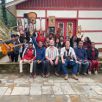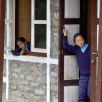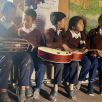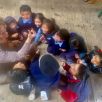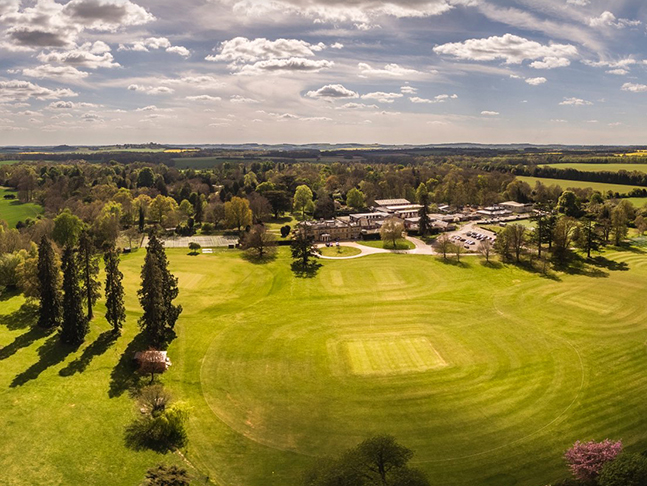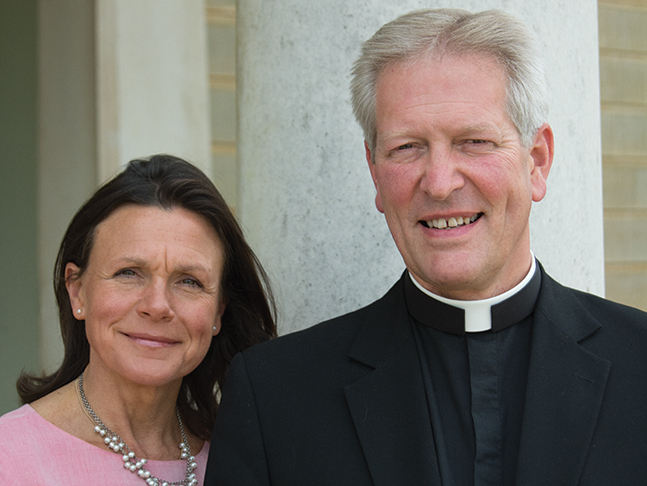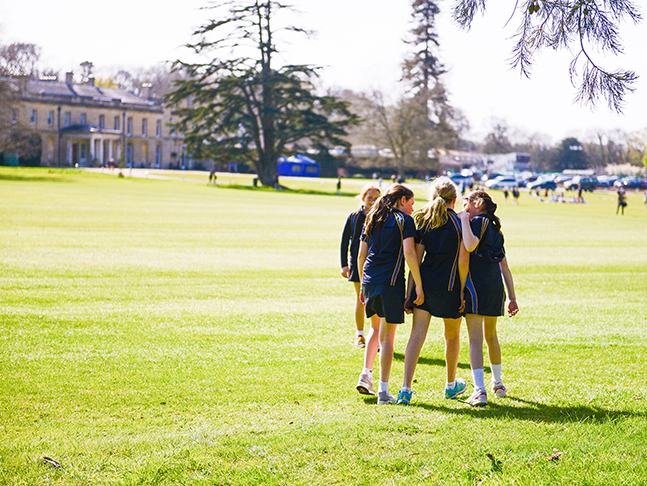Bridging the Gap Between Art and Education in Nepal
2014 Farleigh leavers & Old Shirburnians, Freddie Graham and Tom Wheeler write:
We spent a month in the mountainous district of Solukhumbu, Nepal, teaching combined classes of English, music and drama to children aged five to 18. Nepali schools don’t include the arts in their syllabus, so children aren’t exposed to it in education, posing initial challenges in persuading the teachers of the arts’ educative importance. Despite this, we communicated our strong belief in the arts’ ability to build emotional and creative intelligence, encourage active engagement, build confidence and communication skills, and to energise, all whilst in a fun, dynamic, and inclusive environment. The schools used traditional teaching methods, such as verbal and textbook sources. Our lessons were the antithesis, suggesting new possibilities for engaged learning. Its successes taught us so much.
We began our journey in Kathmandu and were immediately transfixed by Nepal’s rich religious roots and fascinating cultural heritage. Kathmandu’s spiritual essence permeates its detailed architecture, powerful religious art, and, most noticeably, the generosity and openness of Nepali people. We met the lovely Stay At School Nepal team, who explained the practicalities for the onward journey and supplied musical instruments and solar power equipment for the schools.
Stay At School, based in Winchester, builds accommodation near isolated, rural schools so that children spend less time walking long routes to school and more time on their learning and friendship-building. Consequently, they receive a better education and brighter futures after school.
Our first stop was Nele Bazaar, a small town tucked away from Nepal’s main routes. This meant that as drum-wielding, long-haired foreigners, we were particularly intriguing to many of its inhabitants! We knew we were in a special place; enthusiasm burst from the walls, playing fields, and voices of Nele school. We delved into teaching rhythmic exercises, polyrhythms, dynamics, songs, new English words, tricky tongue twisters, and how to control emotional responses. The children particularly enjoyed ‘call and response,’ where the leader plays or shouts a rhythm that everyone else imitates. We left having established a new and equipped music room, which was great news!
Our second stop was the historic Sherpa village of Junbesi. Sir Edmund Hillary passed through Junbesi on his route to summit Everest and never forgot it, later founding a school there. One of his oxygen tanks still serves as the school bell. Again, our lessons were very well received. We quickly engaged the teachers and children to get involved in class, teaching more musical and dramatic fundamentals and teaching songs such as ‘I Can See Clearly Now’. We had the pleasure of teaching a very young cohort, at about age five, who were particularly amusing and enthusiastic, quickly picking up the art of improvisation and mime. The ‘Dead-Pan’ theatrical exercise was central to this, where everyone focuses on controlling their emotions whilst one person tries to make them laugh. The universal language of comedy was radiant! From Junbesi, we repeatedly visited the surrounding Buddhist monasteries above the clouded forests, absorbing the lessons, sounds, and visual art of the Lamas, many of whom had fled Tibet, seeking refuge in Nepal.
For our final week of teaching, we trekked to the beautiful village of Bhakanje, over the crumbling monsoon-beaten tracks, falling trees, swarms of leeches, and (just about!) keeping up with our tenacious Sherpa guide with all but one musical instrument intact. Once more, the arts weaved their way through the language barrier, allowing for a fully immersed learning experience. At this school, polyrhythms were the favourite, often resulting in spirited whoops and shouts spilling out over the valley, with everyone fully immersed in the music.
Afterwards, we had time to explore some incredible treks, ascending above Mardi Himal Base Camp and spending time around Pokhara before finally returning to Kathmandu.
We’re immensely grateful to have had such an incredible experience: to the schools, the children, Stay At School, and the friends we made along the way, all of whom treated us as brothers rather than Western outsiders. The sense of community was so strong, and we were openly welcomed to be a part of it. We’d strongly encourage anyone reading this to combine their passions with charitable work; it can bring so much light to others and to yourself.


